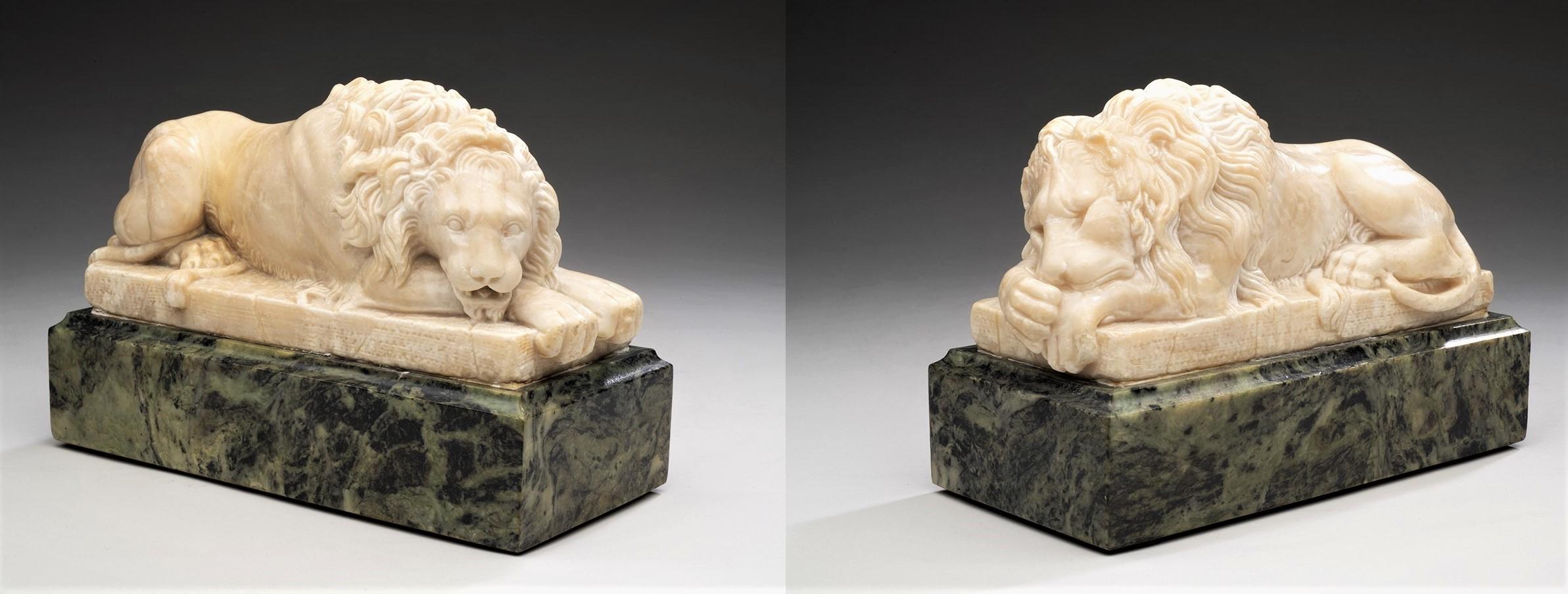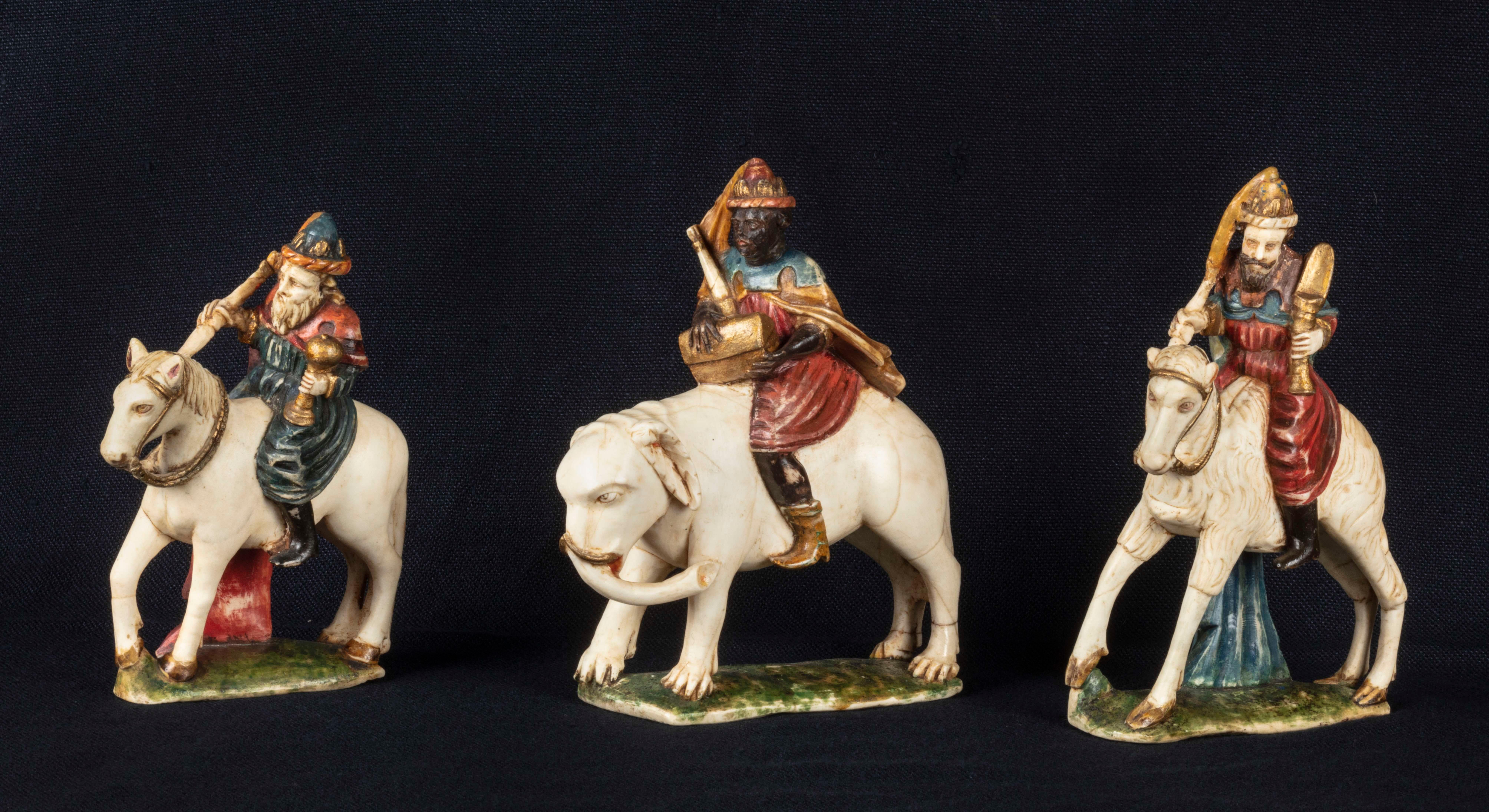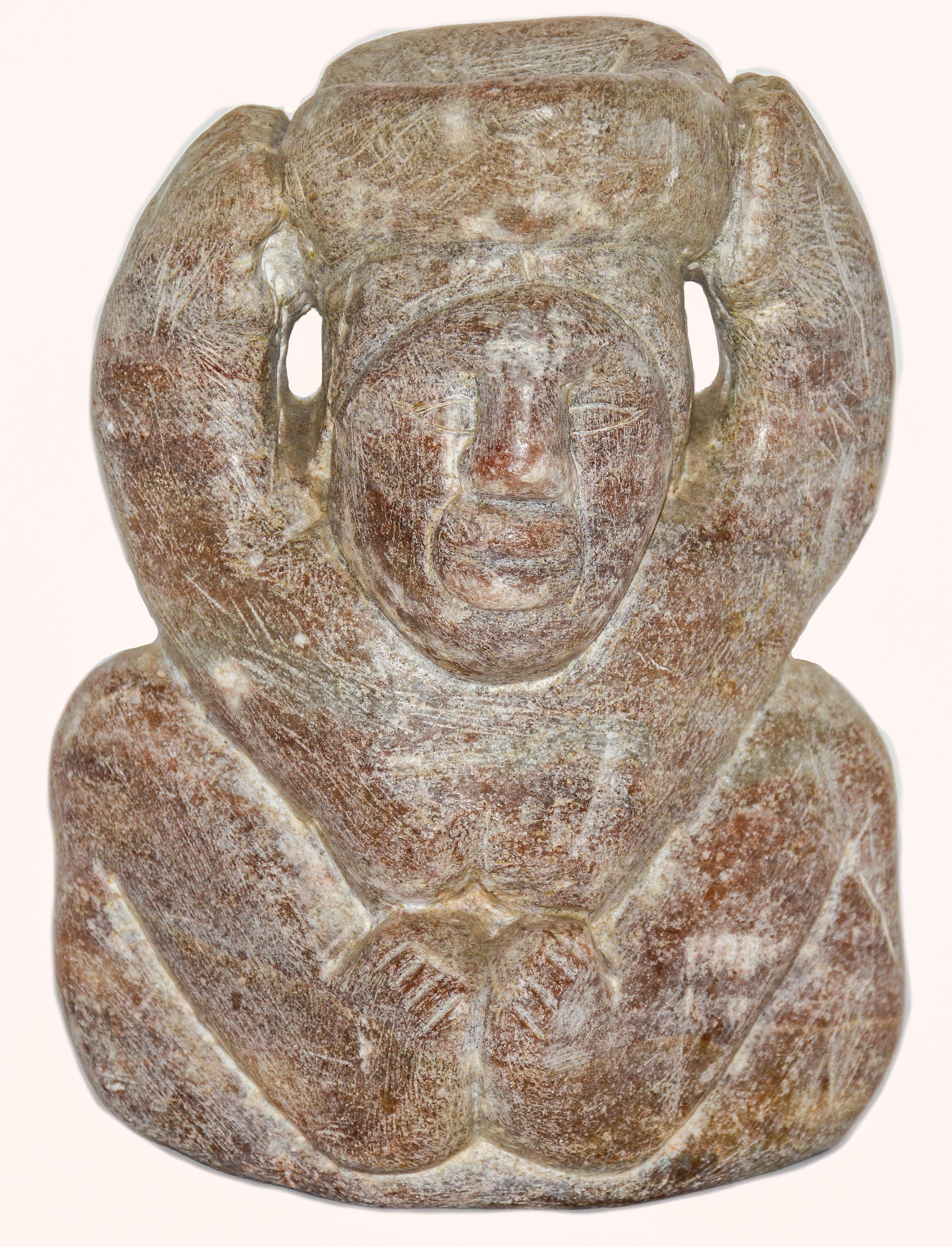Items Similar to Sculpture Portrait Bust Of Dante Alighieri Italian White Alabaster Grand Tour
Want more images or videos?
Request additional images or videos from the seller
1 of 9
UnknownSculpture Portrait Bust Of Dante Alighieri Italian White Alabaster Grand Tour after 1900
after 1900
About the Item
a portrait bust in alabaster marble of the "Sommo Poeta" Dante Alighieri universally knew as the father of the Italian Language and one of the most important Italian writer poet and politician. Author of the Divina Commedia in english The Divine Comedy It widely considered to be the pre-eminent work in Italian literature and one of the greatest works of world literature. is one of his most famous works and is a long Italian narrative poem and an immaginative vision of the afterlife is representative of the medieval world-view as it had developed in the Western Church by the 14th century. It helped establish the Tuscan language, in which it is written, as the standardized Italian language. It is divided into three parts: Inferno, Purgatorio, and Paradiso.
Dante was born in Florence, Republic of Florence, the exact date of his birth is unknown, although it is generally believed to be around 1265. This can be deduced from autobiographic allusions in the Divine Comedy. Its first section, the Inferno, begins, "Nel mezzo del cammin di nostra vita" ("Midway upon the journey of our life"), implying that Dante was around 35 years old, since the average lifespan according to the Bible (Psalm 89:10, Vulgate) is 70 years; and since his imaginary travel to the netherworld took place in 1300, he was most probably born around 1265. Some verses of the Paradiso section of the Divine Comedy also provide a possible clue that he was born under the sign of Gemini: "As I revolved with the eternal twins, I saw revealed, from hills to river outlets, the threshing-floor that makes us so ferocious" (XXII 151–154). In 1265, the sun was in Gemini between approximately 11 May and 11 June (Julian calendar).Dante claimed that his family descended from the ancient Romans (Inferno, XV, 76).
Dante Alighieri was source of inspiration for many sculptor and artist as testament of his greatness and as a proof his usually represented with a laurel wreath symbol of glory, erudition, victory.
Starting in the ancient Egypt and consolidated in Europe, in Tuscany the use of alabaster in sculpture was very usual until the beginning of the 20th Century especially for the grand tour production. The Grand Tour was the 17th- and 18th-century custom of a traditional trip through Europe undertaken by upper-class young European men of sufficient means and rank (typically accompanied by a chaperone, such as a family member) when they had come of age (about 21 years old). The custom — which flourished from about 1660 until the advent of large-scale rail transport in the 1840s and was associated with a standard itinerary — served as an educational rite of passage. Though the Grand Tour was primarily associated with the British nobility and wealthy landed gentry, similar trips were made by wealthy young men of other Protestant Northern European nations, and, from the second half of the 18th century, by some South and North Americans.
- Creation Year:after 1900
- Dimensions:Height: 9.06 in (23 cm)Width: 4.73 in (12 cm)Depth: 2.37 in (6 cm)
- Medium:
- Period:
- Condition:
- Gallery Location:Roma, IT
- Reference Number:1stDibs: LU135018772372
About the Seller
4.9
Gold Seller
These expertly vetted sellers are highly rated and consistently exceed customer expectations.
Established in 1998
1stDibs seller since 2020
86 sales on 1stDibs
Typical response time: <1 hour
- ShippingRetrieving quote...Ships From: Roma, Italy
- Return PolicyA return for this item may be initiated within 1 day of delivery.
More From This SellerView All
- Pair Of Green And Yellow Marble Grand Tour Obelisks Sculptures Classical StyleLocated in Roma, ITan elegant pair of grand tour sculptured obelisks, carved in a warm and elegant green marble with two squared three orders bases carved in a Siena Yelllow Marble. The two marble used...Category
20th Century Other Art Style Sculptures
MaterialsMarble
- White Marble Italian Sculpture of Young Fisherman Signed And Dated Guliani 1871Located in Roma, ITan interesting sculpture carved in Rome in 1871 by F.Guliani as signed and dated on the bottom rear of the sculpture; the boy fisherman is portrayed as he collects his net which is ...Category
Late 19th Century Other Art Style Figurative Sculptures
MaterialsMarble
- Pair Of Red and Black Marble Sculpture Grand Tour Obelisk 20th CenturyLocated in Roma, ITa very interesting and beautiful pair of obelisks carved in a warm and precious red marble the Red France Languedoc Incarnat, used for important and uinque decoration in the Versaill...Category
20th Century Other Art Style Sculptures
MaterialsMarble
- Workshop Benedetto Boschetti Grand Tour Marble Model Of Bath With Ferine FeetLocated in Roma, ITA Giallo Antico (Giallo Numidia ) marble grand tour model of a bath with ferine feet standing on a squared Violet Marble two order base. The work from the workshop of Benedetto Bosch...Category
19th Century Other Art Style Figurative Sculptures
MaterialsMarble
- Sculpture Venus de' Medici White Marble 19th Century Signed Nude ClassicalLocated in Roma, ITan interesting and beautiful sculpture of Venus, knew as Venus de' Medici, depicts the goddess in a fugitive, momentary pose, as if surprised in the act of emerging from the sea, to which the dolphin at her feet alludes.Carved in the 19th century in a pure and elegant white marble, the sculpture here presented with the height of 81 m is a scale version of the original that has an height of 153 displayed at the Uffizi Gallery in Florence. The statue, a Venus pudica, is inspired, like the other variants of the theme, by Praxiteles' Cnidian Aphrodite, with particular similarities to the Capitoline Venus...Category
19th Century Figurative Sculptures
MaterialsMarble
- White Marble Nude Torso Sculpture Apollo Grand Tour Style Classical 20th ItalianLocated in Roma, ITA white marble nude torso sculpture of the god Apollo in grand tour style, classical greek carved in the 20th century, probably Italia centrale. Apollo depicted nude with a releva...Category
20th Century Other Art Style Nude Sculptures
MaterialsMarble
You May Also Like
- Rare and Important Italian Alabaster Bust Sculpture of Jesus Christ, C. 1860Located in New York, NYA rare and important Italian alabaster bust sculpture of Jesus Christ, C. 1860 A modeled bust of Holy Christ wearing a crown of thorns, exceptional...Category
19th Century Baroque Figurative Sculptures
MaterialsAlabaster
- Ariane on Panther, Statue Alabaster, after J. H. Dannecker, end 19th cent.Located in PARIS, FR“Ariane on Panther” is the most worldwide known work of the German sculptor Johann Heinrich Dannecker, born 1758 and died 1841 in Stuttgart , pupil of Pajou and Canova. The original ...Category
1890s Academic Figurative Sculptures
MaterialsAlabaster
- “Mother and Child” Biomorphic Modern Abstract Sculpture of Embracing FiguresLocated in Houston, TXBiomorphic abstract sculpture by Canadian artist John McKinnon. The work features a mother figure holding her child in a loving embrace. Inspired by other modern artists such as Henr...Category
1980s Abstract Figurative Sculptures
MaterialsMarble, Alabaster
- Pair of Italian "Alabaster Stone Lions" after Antonio Canova; Mid 19th CenturyLocated in SANTA FE, NM"Pair Recumbent Stone Lions" after Antonio Canova (1757-1822) Italian (possibly Florence) Mid 19th Century Alabaster, marble 6 x 9 x 4 inches This is an exquisite pair of Italian alabaster lions on marble bases based on the monumental lions carved by Antonio Canova (1757-1822), the greatest Italian neoclassical sculptor. Canova sculpted the marble lions for the monumental tomb of Pope Clement XIII in St. Peter’s, Rome in 1792 Canova Lions refers to the pair of copies of lion sculptures by Antonio Canova. When Canova created the sculptures in 1792, he installed them on the tomb of Pope Clement XIII. The marble sculptures are some of the most prominent features in St. Peter's Basilica in Rome. Given the intricacies of creating the original Canova lions, some artists created molds and replicated them. A good example is the pair of lion sculptures...Category
1850s Italian School Figurative Sculptures
MaterialsAlabaster, Marble
- The Three MagiLocated in New York, NYProvenance: Private Collection, Spain. Known as Peruvian alabaster for its translucency and workability, Piedra de Huamanga is a highly prized material from the province of Ayacucho in Peru. In the 17th and 18th centuries, local craftsman in the town of Huamanga began to specialize in the production of small-scale, polychrome religious sculptures made from this distinctive stone. Huamanga sculptures are among the most accomplished examples of carving from the Spanish Americas, where polychrome wood sculpture was a far more common sculptural medium. These works, which were created as independent sculptures or as sculptural groups—such as our three Magi—were intended for ecclesiastical as well as domestics settings. Our three figures likely formed part of a larger Nativity group—a New World variant of the tradition of the Neapolitan Crèche...Category
Late 18th Century Figurative Sculptures
MaterialsAlabaster
- Woman With Bowl by Francisco FranklinBy Francisco FranklinLocated in Los Angeles, CAWoman With Bowl Francisco Franklin Sculpture carved in Arizona Alabaster 1987 Hand signed "Francisco" 9.25 inches H. X 7 inches W. x 4.13 inches D. This wonderful stone sculpture perfectly captures the naive style represented by the body of the artist's work. This piece is in excellent original condition. Frank Francisco Franklin is an American artist whose roots are strongly linked with those of the Mexican people...Category
Late 20th Century Folk Art Figurative Sculptures
MaterialsAlabaster
Recently Viewed
View AllMore Ways To Browse
Antique Italy Sculpture
Italian Style Sculptures
Sculpture After Antique
Antique European Sculpture
The Grand Tour
Church Sculpture
Antique English Sculpture
White Marble Sculpture Figurative
Italian White Alabaster
Antique White Scale
The Grand Tour Sculpture
Large Roman Sculpture
Sculpture In Alabaster
20th Century British Sculptures
Floor Sculpture White
Large White Marble Sculpture
Italian Antique White Marble Sculpture
Alabaster Used




